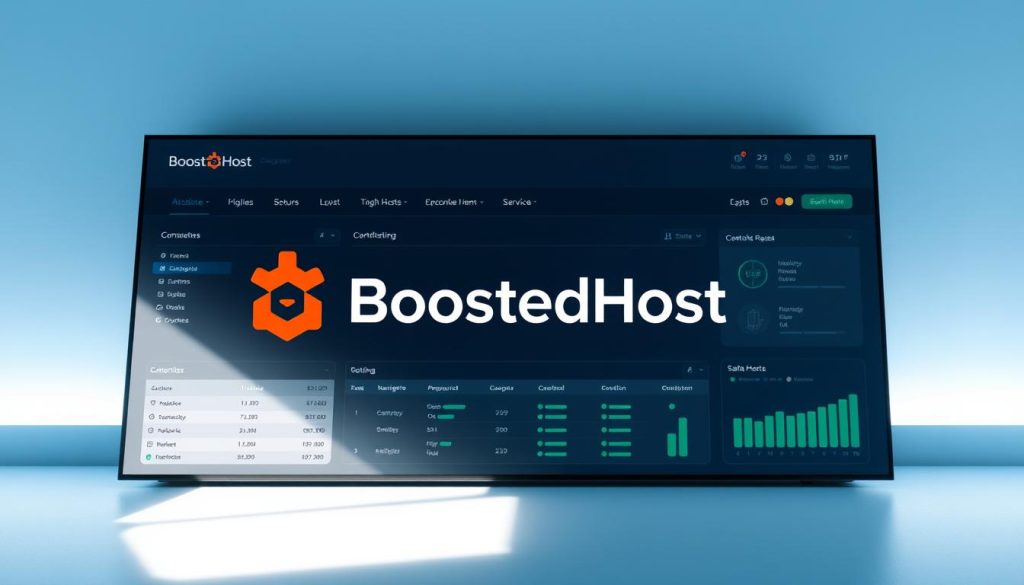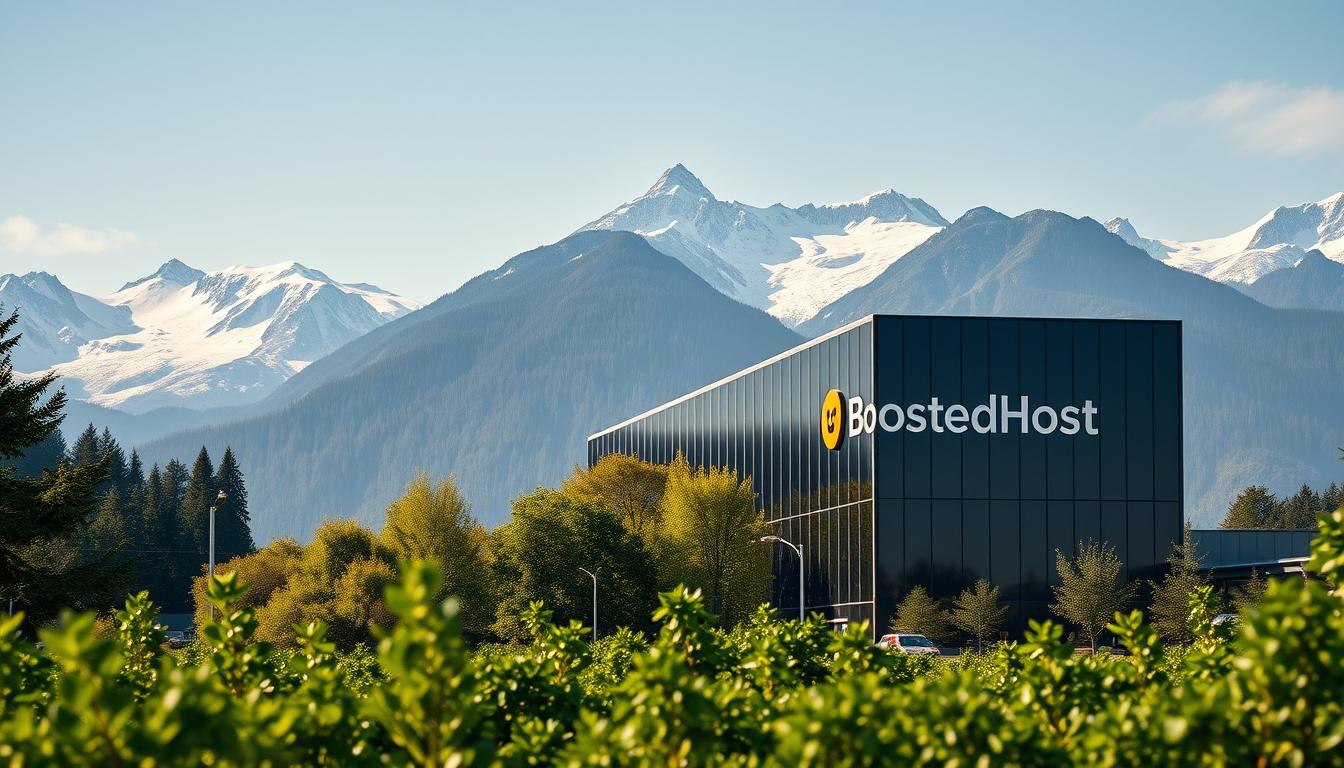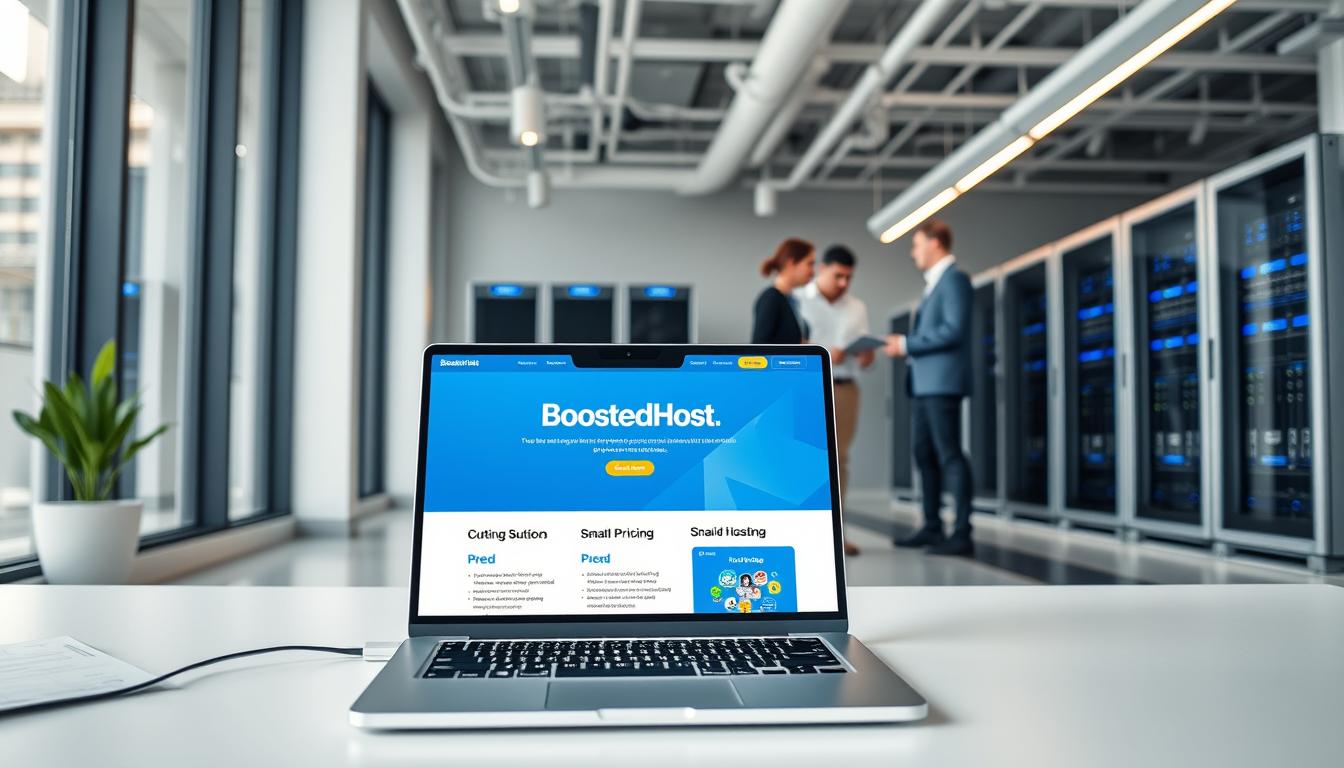We know how it feels to stare at hosting charts and wonder which service will actually make a website faster, safer, and easier to run.
We built this review to cut through the noise. We compare measurable outcomes—speed, uptime, pricing, and support—so your site wins.
Our tests focus on real performance: server response, uptime, included tools, and total cost over time. We highlight where a Swiss-engineered LiteSpeed stack and global CDN push sub-200ms TTFB and where a long-standing U.S. host shows steady reliability at a different price point.
Expect clear guidance. We call out pricing transparency, built-in value like free SSL and daily backups, and support speed. Then we map use cases—speed-first sites, eCommerce, and budget U.S. projects—so you can act with confidence.
Key Takeaways
- We focus on tangible metrics: speed, uptime, and support response time.
- Swiss LiteSpeed and CDN setups aim for top global TTFB and SEO gains.
- MDDHosting shows solid uptime and straightforward U.S.-centered support.
- Pricing transparency and included tools can cut total cost and launch time.
- We provide tests you can run to verify TTFB, page speed, and uptime in your region.
Snapshot: Which host fits your site in 2025?
We focus on practical fits—speed, uptime, and cost clarity. Pick a host that matches how your website will grow and where your visitors live.
If global speed matters: a LiteSpeed + CDN stack delivers sub-200ms TTFB, free SSL, daily backups, malware protection, and transparent pricing. That combo is ideal for growth-focused eCommerce and agencies that need fast checkout and staging.

If U.S.-centric deployment is your priority: the other company shows ~444 ms averages and 99.99% uptime (Mar–Aug 2022). They include free cPanel migrations, a 30-day money-back guarantee, and an aggressive uptime credit policy.
“Fast pages and regional data centers reduce friction for customers—and sales follow.”
- Transparent pricing vs lower intro and higher renewal rates—check total cost over time.
- AI site builder can launch a professional website in under five minutes—no equal tool on the U.S.-centric option.
- Support speed: one host resolves most tickets in minutes; the other offers 24/7 tickets/chat and weekday phone for sales.
In short, choose by priority: global reach and raw speed, or straightforward U.S. hosting with solid uptime and easy migrations. We map the best options for business needs so you can act fast and confidently.
BoostedHost vs MDDHosting at a glance
Here’s a concise snapshot of each host’s strengths and the trade-offs to expect.

Core strengths and trade-offs
Performance-first option: One company delivers Swiss-grade performance with LiteSpeed servers, a global CDN, and sub-200ms TTFB. That setup includes free SSL, daily backups, malware protection, and a fast Orbit AI builder that creates a professional site in minutes.
Reliable U.S. option: The other host scored 99.99% uptime (Mar–Aug 2022) and ~444 ms average speed. It offers free cPanel migrations, daily offsite backups, Softaculous, and a 30-day money-back guarantee.
Who each host is best for
- Speed-first sites, eCommerce, and agencies: prefer the global CDN, bundled security, and fast 24/7 support.
- U.S.-centric businesses: choose the Denver-based host for straightforward shared hosting and reliable uptime.
“Transparent pricing and built-in features reduce hidden costs and speed time-to-launch.”
For background on the performance-focused company, see our about page: about us.
Speed and real-world performance
Website speed is a silent conversion driver, and we judged hosts by it. We tested server response, caching, and edge delivery to see which setup cuts milliseconds and lifts user metrics.
BoostedHost: sub-200ms global TTFB with LiteSpeed + CDN
LiteSpeed + global CDN is tuned for sub-200ms TTFB worldwide. That reduces time-to-first-byte and helps Core Web Vitals.
Faster first render leads to quicker interactivity, fewer bounces, and higher conversion rates—especially for image-heavy pages and checkout flows. Edge caching and LiteSpeed Cache smooth traffic spikes across regions.
Learn more about the platform on the about us page.
MDDHosting: historically fast load times around 444 ms
Historic tests recorded ~444 ms average load time (Mar–Aug 2022) with 99.99% uptime. Their stack—SSD, LiteSpeed, and StorPool—aims for solid I/O and steady performance for U.S.-centric sites.
What speed means for SEO and conversions
Performance consistency yields ranking advantages. Google favors stable, fast delivery, so fast sites outrank slower rivals for competitive queries.
- Faster TTFB = faster interactivity and improved Core Web Vitals.
- Edge caching and LiteSpeed optimizations reduce latency spikes for global visitors.
- Test from your key markets with tools like WebPageTest and Lighthouse before migrating.
Uptime and reliability you can bank on
Reliable uptime turns good hosting into dependable revenue. We measure availability because brief outages cost conversions and trust.
99.99% average uptime and multi-region resilience
The performance-first provider maintains a 99.99% average uptime across distributed regions in Switzerland, the USA, Europe, and Asia. Multi-region deployments add failover and reduce single-point failures.
Quick incident response and a modern stack limit the blast radius when issues occur. Daily backups and built-in malware protection add safety layers for agencies and growing teams.
Proven track record and an aggressive credit policy
One U.S.-based competitor recorded 99.99% uptime from March–August 2022, with many months at 100%.
They back shared and reseller plans with a “1000%” credit policy — ten hours of account credit for each hour of qualifying downtime. This is useful, but we prefer prevention over payouts.
- Distributed servers lower regional risk and improve resilience.
- Validate availability with external monitors and region-specific tests.
- Consistent uptime protects revenue and reputation for live campaigns.
The outcome: predictable stability that lets you scale content, ads, and promotions without firefighting outages. For serious sites, multi-region hosting and fast response matter more than credits alone.
Transparent pricing and total cost of ownership
Upfront costs and renewals shape real value—let’s break them down. We focus on what you actually pay over time, not just the launch price.
BoostedHost: no hidden fees, flexible tiers for individuals and agencies
We see predictable pricing as a feature. Essential services—SSL, daily backups, malware protection, and CDN—are bundled.
That lowers your total cost of ownership by removing recurring extras. Agencies get flexible plans that scale per client without surprise charges.
MDDHosting: straightforward intro rates, higher renewals
Intro plans start at $6.99/month and renew at $14.99/month. Free cPanel migrations apply for 60 days; later fees may be $10/site or $25 for non-cPanel moves.
Some add-ons—domains, advanced email security—are extra. A 30-day refund policy applies to most plans.
- We mapped a three-year cost curve to reveal true expenses beyond year one.
- Bundled features reduce recurring fees that often raise the cost per site.
- Pick the pricing structure that protects margins and keeps performance steady.
| Item | Included (Transparent) | Typical Add-ons |
|---|---|---|
| SSL | Yes, free | — |
| Daily backups | Yes | Offsite retention upgrades |
| Migration | Free (limited) | $10–$25 after window |
| Intro / Renewal | $6.99 / $14.99 (example) | Domain, SpamExperts |
Included features that cut extra spending
The right included tools save money and reduce setup time for any website. We look at which bundles remove add-on bills and which still leave gaps you must fill.
Performance-first bundle
One host bundles enterprise-grade essentials — free SSL, daily backups, malware protection, and a global CDN. These services lower risk and cut recurring costs.
Daily restore points and proactive malware defense reduce downtime and recovery expenses. The global CDN speeds asset delivery worldwide and helps SEO.
U.S.-centric value pack
The other host includes free SSL, daily offsite backups (7-day retention noted), Softaculous for fast installs, and unlimited free cPanel migrations during the first 60 days.
That setup eases onboarding for cPanel users and speeds common app installs for WordPress or Joomla.
- Cost saving: bundled security and backups remove extra vendor fees.
- Onboarding: free migrations and Softaculous reduce setup time.
- Team readiness: secure-by-default services lower configuration errors.
| Included item | Performance-first host | U.S.-centric host |
|---|---|---|
| SSL | Free, automatic | Free, automatic |
| Backups | Daily with restore points | Daily offsite (7-day retention) |
| Malware protection | Built-in, proactive | Optional / add-on |
| Migration & apps | Streamlined onboarding | Unlimited cPanel migrations (60 days), Softaculous |
Choose the host that delivers the services you need out of the box. That keeps your web hosting stack lean and your sites fast.
Website building and AI tools
A quick, polished site can turn ideas into revenue in hours, not weeks. We value tools that cut build time and keep SEO strong.
Orbit: AI site builder that launches in under five minutes
Orbit uses AI prompts to create content blocks, layouts, and assets fast. The result: a professional website ready to edit in under five minutes.
That speed reduces development overhead. It lets teams test pages and go-live quickly. Agencies get faster client previews and shorter approval cycles.
“Orbit lowers dependence on external design tools and freelancers for simple to mid-complex builds.”
Traditional builders and one-click installs
The U.S. host offers classic site builders and Softaculous installers. Those are solid options for hands-on developers.
They lack AI acceleration, so builds take longer. But both providers support standard CMS tools when you need full control.
- Speed-to-launch: faster revenue and lower project costs with AI-driven templates.
- SEO foundations: clean markup, schema options, and mobile responsiveness remain top priorities.
- Workflow options: choose AI for speed or manual builds for granular control.
| Feature | AI builder | Traditional tools |
|---|---|---|
| Speed | Minutes | Hours–Days |
| SEO-ready output | Clean markup & schema options | Depends on template / plugin |
| Best for | Small businesses, agencies prototyping | Custom sites, advanced dev workflows |
Managed WordPress and WooCommerce readiness
High-traffic stores demand hosting tuned for quick queries and reliable backups. We evaluate managed stacks by how they handle carts, concurrent users, and peak promos.
Managed environment tuned for LiteSpeed Cache
Our managed stack leverages LiteSpeed Cache to cut database hits and speed page delivery.
Faster queries and optimized caching lower TTFB and make cart interactions snappier. That reduces abandonment during checkout windows.
U.S.-centered hosts with LiteSpeed support
Other hosts support LiteSpeed Web Server and LiteSpeed Cache too, paired with SSD storage and StorPool I/O. That combo delivers solid results for U.S. audiences.
Both environments run staging, automatic updates, and backups—but the managed plan includes daily backups plus built-in malware protection for high-traffic promos.
- Object caching: cuts database overhead for content-heavy pages.
- Best practices: slim themes, selective plugins, and image optimization keep render time low.
- Global reach: CDN + multi-region servers compound gains for international visitors.
Takeaway: optimized hosting reduces maintenance load and lifts revenue per visit. Choose managed plans when speed, reliability, and safe staging matter for your online store.
Developer stack and app compatibility
Developers need predictable servers and clear workflows to ship features fast. We evaluate how each host supports modern stacks, deployment pipelines, and common app installs.
Modern language support and CI/CD
PHP, Node.js, and Python run smoothly here. That means frameworks, APIs, and headless builds work without hacks.
Command-line workflows and Git-based CI/CD integrate cleanly. You can test locally, push, and deploy with predictable environment variables and background workers.
cPanel, Softaculous, and quick app installs
The U.S.-centric option gives a clean control panel with Softaculous. One-click installs speed WordPress, Joomla, and Drupal deployments.
- Version management: contemporary PHP versions pair well with LiteSpeed caching for better performance.
- Node.js support: enables microservices and headless site options that typical shared plans block.
- Validation checklist: confirm dependency versions, env vars, and worker processes before go-live.
| Feature | Developer benefit | When it matters |
|---|---|---|
| Language support | PHP / Node / Python | APIs, headless sites, microservices |
| Control panel | cPanel + Softaculous | Fast CMS installs, familiar UI |
| CI/CD | Command-line + Git hooks | Predictable deploys, fewer outages |
Bottom line: pick the hosting option that matches your stack. Developer ergonomics reduce outages and speed feature delivery so your team spends time shipping, not troubleshooting.
Security posture and backups
Strong defenses and clear backup policies turn incidents into brief interruptions, not disasters. We judge hosts by what they block, what they store, and how fast you can restore a website.
Built-in malware protection and daily restores
One provider ships with proactive malware protection and daily backups by default. That reduces the risk window and shortens recovery time when threats appear.
Automatic scanning blocks common exploits before they escalate. Daily restore points let teams roll back quickly without lengthy data loss investigations.
Offsite retention and continuous protection
The U.S.-centric option uses continuous data protection and daily offsite backups with ~7-day retention. It also offers free SSL through AutoSSL/Let’s Encrypt.
Encrypted traffic and certificate auto-renewal are standard. Implementing HSTS and recent TLS versions further hardens connections.
- Proactive malware blocks threats before incident windows open.
- Daily backups enable fast restores and calm teams during incidents.
- Offsite retention protects against local failures and accidental deletes.
- We recommend quarterly restore tests and least-privilege access for team accounts.
| Security item | Performance-first host | U.S.-centered host |
|---|---|---|
| Malware protection | Built-in, proactive | Monitoring / optional tools |
| Backup cadence | Daily with restore points | Daily offsite (approx. 7-day retention) |
| SSL / TLS | Auto SSL, TLS modern versions | AutoSSL / Let’s Encrypt, TLS modern versions |
| Recommended practices | Quarterly restores; least-privilege accounts | Quarterly restores; least-privilege accounts |
Bottom line: Security is an operating principle, not a checklist. Choose hosting that bundles prevention and repeatable backups to protect revenue, maintain rankings, and keep customer trust.
Global reach and data center locations
Choosing where your site lives determines how fast pages load for your visitors.
We recommend picking regions that match your audience. Multi-region presence lowers latency and helps compliance for regulated sites.
Multi-region coverage: Switzerland, USA, Europe, and Asia
Running servers across Switzerland, the USA, Europe, and Asia gives your website real edge.
Lower latency: regional origins cut first-byte delays. Edge caching plus origin selection smooths traffic worldwide.
Regional hosting also meets data locality and privacy rules for regulated sectors. That matters for finance, health, and EU/Swiss compliance.
U.S.-centric footprint: Denver, Colorado data centers
For U.S. audiences, a Denver-based presence delivers predictable performance. It suits sites with mainly American visitors and centralized operations.
Disaster recovery is simpler with region diversity. Failover routes avoid local outages and protect revenue during spikes.
- Boosted provider: multi-region lowers cart lag and streaming buffers for global stores.
- U.S. provider: Denver data centers optimize experience for domestic traffic.
- Use traffic analytics to deploy close to high-value users and reduce round-trip time.
| Region | Best for | Notes |
|---|---|---|
| Switzerland / Europe | Compliance-sensitive sites, EU audiences | Low-latency for European visitors; strong privacy alignment |
| USA (Denver) | U.S.-centric businesses | Predictable performance for domestic traffic; simple operations |
| Asia | International stores, media streaming | Reduces buffering and cart lag for APAC users |
Bottom line: global reach is revenue insurance. Deploy near your highest-value users and let regional services handle the rest.
Customer support and resolution time
Fast, effective support is one place a host either saves you hours or costs you customers. We evaluate real-world response and resolution, not marketing claims. Prompt expert help prevents downtime and preserves revenue during campaigns.
24/7 expert support resolving most requests in minutes
The performance-first company offers round-the-clock experts. Most tickets are triaged and resolved in minutes, not hours.
That speed matters: incidents during peak traffic get fast escalation and clear status updates. Proactive communication keeps teams calm and clients informed.
Responsive tickets, live chat, and limited phone hours
The U.S.-centered host provides 24/7/365 chat and ticketing. Sales and billing phone support run weekdays, 8 AM–4 PM ET.
Reviewers praise fast, knowledgeable replies. The model fits hands-on admins who value consistent ticket coverage.
- Built for speed: support mirrors hosting performance—rapid triage and fixes.
- SLAs and escalation flows move you from symptom to fix quickly.
- For agencies, fast resolution preserves client trust and prevents churn.
- Measure first-response time and time-to-resolution when you evaluate services.
“The right support team saves more revenue than a discount ever will.”
Control panels, migration, and ease of setup
A smooth onboarding path turns hosting choices into launched websites, not long to-do lists.
Streamlined onboarding and automatic SSL
We prioritize fast provisioning. Accounts are created quickly and defaults are secure.
Automatic SSL arrives with the account. That removes a common blocker and speeds DNS updates for a live site.
Simple control panels and clear docs mean teams spend minutes on basic tasks, not hours hunting settings.
Free unlimited cPanel migrations, but a longer signup
The other host offers free, unlimited cPanel migrations in the first 60 days. That makes multi-site moves efficient for agencies.
The signup process can be longer than average, though activation usually follows fast once complete.
- Quick wins: fast provisioning, SSL, and clear defaults cut time-to-launch.
- Migration perk: unlimited cPanel moves for 60 days reduce per-site costs.
- Control panel: familiarity lowers training time for teams managing domains and services.
“Easy setup is not cosmetic — it directly impacts launch timelines and team efficiency.”
Zero-downtime migration checklist: backup files and DBs, stage on the target, shorten TTL, sync assets, swap DNS, and purge caches. Follow these steps and your website stays live during the move.
Scalability for individuals, small businesses, and agencies
Scaling your website should be seamless—your host must grow with traffic, features, and team size. We designed plans so a solo creator can start light and an agency can manage hundreds of sites without surprise slowdowns.
Flexible configurations handle campaign surges, product launches, and seasonal ad spend. PHP, Node.js, and Python are supported across tiers so modern stacks deploy without workarounds.
For ecommerce, LiteSpeed and a global CDN keep checkout fast as catalogs and concurrent shoppers grow. That reduces cart abandonment during peak traffic.
- From personal to agency: plans scale cleanly with predictable performance headroom.
- Growth-ready services: flexible CPU, RAM, and edge caching for traffic spikes.
- Alternative options: Cloud shared tiers, VPS, and reseller hosting suit mid-size projects and white-label needs.
- Developer-friendly: multi-language support for modern product roadmaps.
Phone support for sales and billing is limited on some providers, so agencies should factor support hours into launch plans. We recommend capacity planning tied to seasonality and ad budgets to avoid last-minute bottlenecks.
| Audience | Best fit | Key benefit |
|---|---|---|
| Solo creators | Entry shared plan | Low cost, quick launch |
| Small businesses | Cloud shared / VPS | Scalable resources, steady performance |
| Agencies | Reseller / higher tiers | Multi-site management, standardized stack |
Performance testing methodology and what to verify today
Run focused tests from where your customers live to prove real-world performance.
We recommend a simple, repeatable test plan. Test medians, not single runs. Record results and compare across providers in your target regions.
How to validate TTFB, uptime, and page speed in your region
- Test TTFB from key cities using WebPageTest or a global tester. Run 7–10 tests and use the median value.
- Measure full page speed with Lighthouse. Note LCP, FID, and CLS. Optimize images and caching until metrics are green.
- Set up third-party uptime monitors for at least two weeks. Compare measured uptime to the stated 99.99% benchmark.
- Validate CDN delivery by testing static assets from multiple regions during peak hours.
- Compare the sub-200ms TTFB claim against your nearest edge — document deltas and retest after cache warm-up.
- Use synthetic tests and Real User Monitoring (RUM) for a full picture of visitor experience.
- Open a controlled support ticket and track time-to-first-response and resolution to judge support under load.
| Metric | What to record | Benchmark |
|---|---|---|
| TTFB | Median from conversion cities | Sub-200ms (performance-first); ~444ms (U.S. benchmark) |
| Page speed | Lighthouse LCP / FID / CLS | LCP <2.5s, FID <100ms, CLS <0.1 |
| Uptime | Two-week monitor average | 99.99% (historical target) |
| CDN | Static asset latency by region | Consistent subregional improvements |
Choose the host that wins in your markets today—not only on paper. Document tests, then deploy with confidence.
BoostedHost vs MDDHosting: verdict by use case
Our goal is to match hosting features to what actually moves revenue and reduces risk. We focus on where speed, uptime, and bundled services create measurable gains for a website or an online business.
Best for speed-first sites and eCommerce
Choose the performance-first option when global TTFB, LiteSpeed Cache, and a CDN matter to conversions. Sub-200ms response times and multi-region servers cut cart lag and lift SEO.
Included tools—free SSL, daily backups, malware protection, and the Orbit AI builder—speed launches and lower total cost of ownership.
Best for budget-conscious projects needing U.S. hosting
Pick the U.S.-centered host for cost-focused sites that serve primarily American audiences. Expect straightforward shared tiers, Denver data centers, free cPanel migrations, and a 30-day money-back guarantee.
- When to pick performance-first: global stores, campaigns, agencies needing fast launches.
- When to pick U.S.-centric hosting: budget sites, multi-site cPanel moves, domestic audiences.
- Model multi-year pricing and renewal rates before you commit.
“Pick the platform whose strengths align with your revenue goals and audience geography.”
Conclusion
We close this review with clear guidance for fast, practical choices.
Our testing shows the performance-focused company delivers a high-performance stack—LiteSpeed, global CDN, and sub-200ms TTFB—plus daily backups, malware protection, and free SSL by default. Transparent pricing and 24/7 expert support keep operations predictable for growing businesses.
Orbit AI cuts build time from weeks to minutes, so your website reaches customers faster. The U.S.-centered host offers solid domestic performance (≈444 ms) and 99.99% uptime, plus free cPanel migrations and a 30-day money-back guarantee. Renewals can be higher, so model multi-year costs before you decide.
Bottom line: pick the host that matches your region, performance targets, and long-term budget. For speed-first, global eCommerce and agencies we recommend the performance option. For U.S.-only, budget-focused projects, the Denver-based host remains a respectable choice.
FAQ
Which host offers better speed for global audiences?
Both providers deliver strong performance, but one emphasizes sub-200ms global TTFB with LiteSpeed + CDN for consistently low latency worldwide. The other posts historically fast times (around 444 ms) and performs well for U.S.-centric sites. Choose the one with datacenter locations closest to your audience to minimize latency.
Do either provider include a CDN and free SSL in shared plans?
Yes — one includes a global CDN and free SSL by default, reducing the need for extra services. The other also supplies free SSL and reliable offsite backups, though CDN inclusion may depend on the specific plan. Check the plan details to confirm CDN availability.
What uptime guarantees and refund policies are offered?
Each company advertises a 99.99% uptime track record. One provider pairs that with multi-region resilience and transparent credits. The other has a strong historical uptime record and a notable “1000%” credit policy for measured downtime — useful if uptime is mission-critical.
How do pricing and renewal rates compare?
Pricing is straightforward for both, but one focuses on no hidden fees and flexible tiers for solo users up to agencies. The other shows competitive entry pricing with higher renewal rates and possible add-on costs. Factor total cost of ownership — renewals, backups, and managed services — when comparing.
Are daily backups included, and how are they handled?
Daily backups are standard with both hosts. One provides built-in daily backups and malware protection by default. The other offers daily offsite backups (R1Soft-style) and free cPanel migrations. Verify retention periods and offsite restore options.
Which platform is better for WordPress and WooCommerce?
For managed WordPress and WooCommerce, one vendor tunes servers for LiteSpeed Cache and optimized WP performance — ideal for eCommerce speed. The other offers a WordPress-friendly stack with performance-minded features and broad compatibility. Choose based on caching tech and managed support level.
Do they offer an AI website builder or site-building tools?
One company includes an AI Website Builder that can create sites quickly, aimed at users who want fast deployment. The other provides traditional site builder options without AI. If rapid site creation with AI assistance matters, pick the builder-enabled plan.
What developer tools and app support are available?
Both hosts support common developer stacks. Expect PHP, multiple PHP versions, Softaculous app installs, and cPanel control. One adds broader support for Node.js and Python as part of a modern developer offering. Confirm SSH access, staging, and version control options if you need them.
How easy is migration and account setup?
Migrations are straightforward with both. One offers streamlined onboarding and free SSL ready out of the box. The other provides free unlimited cPanel migrations but may have a lengthier signup process. Request a migration plan and estimate before switching.
What data center locations do they use?
One provider has a truly global footprint — Switzerland, USA, Europe, and Asia — supporting worldwide audiences. The other is largely U.S.-centric with key facilities like Colorado/Denver that favor North American visitors. Pick based on where your traffic is concentrated.
How responsive is customer support and what channels exist?
Both offer responsive support. One advertises 24/7 expert support that resolves many issues in minutes via chat and tickets. The other provides responsive ticketing and live chat, with phone support for sales and billing. For mission-critical sites, test response times before committing.
Are security features like malware protection and SSL included?
Security basics are included with both providers. One includes built-in malware protection plus daily backups by default. The other covers SSL and robust offsite backups. Review additional options like web application firewalls, DDoS protection, and premium malware remediation if you need advanced security.
Which host scales better for growing businesses or agencies?
Both scale, but they target slightly different needs. One offers flexible plans and agency-friendly tiers that simplify scaling up and resource allocation. The other fits budget-conscious projects that may later require higher renewals when upgrading. Evaluate VPS or cloud options if you anticipate rapid growth.
How should I validate speed, TTFB, and uptime for my site?
Run real-world tests from your target regions. Use tools like WebPageTest, GTmetrix, and synthetic uptime monitors. Check TTFB, full load time, and cache behavior. Also monitor uptime over several weeks to see real stability before deciding.
Is there a money-back guarantee or refund window?
Refund policies vary. Both companies typically provide a money-back guarantee period for shared plans. One emphasizes no hidden fees and flexible refunds; the other follows a clear refund policy with specific conditions. Read the terms for pro-rated refunds on add-ons and renewals.
Which host is better for US-only versus global audiences?
For U.S.-focused projects, the U.S.-centric provider with Denver/Colorado data centers can deliver excellent local performance. For global reach, the host with multi-region data centers (including Europe and Asia) and CDN integration will minimize latency worldwide.




